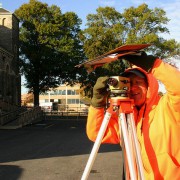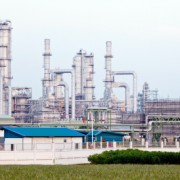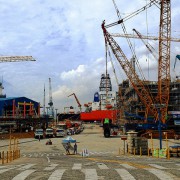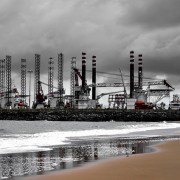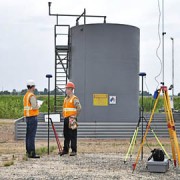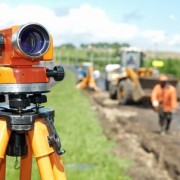Oil and Gas Projects: Finding a Safety-Focused Partner
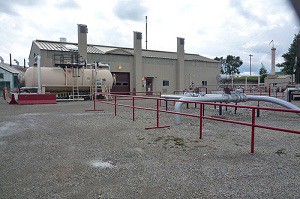 In accordance with OSHA (Occupational Safety and Health Association), every worker has a right to a safe work environment. This is especially important for those in the oil and gas industry for the company as well as for their consultants and partners.
In accordance with OSHA (Occupational Safety and Health Association), every worker has a right to a safe work environment. This is especially important for those in the oil and gas industry for the company as well as for their consultants and partners.
Oil and gas project safety has to be everyone’s priority regardless of job assignment, office or field. Vehicle accidents, explosions, fires, chemical exposures, confined space hazards, or employees caught in equipment may occur on rigs, in wells, or along pipelines. And, hazards that cause people to fall, trip or slip are a threat in any workplace environment.
Safety on Oil and Gas Projects: The Most Common Violations
OSHA’s General Industry Standards (29 CFR 1910), OSHA’s Construction Standards (29 CFR 1926), and General Duty Clause of the Occupational Safety and Health (OSH) Act were enacted to protect worker health and safety in the oil and gas industry.
According to OSHA oil and gas surveys, the five most-cited violations are:
- Hazard Communication (HazCOM) – Negligence of OSHA requirements to provide material safety data sheets (MSDS) for all hazardous materials and chemicals, posted notifications of hazards and chemicals present, or employee training (regular safety meetings).
- Permitted confined spaces – Safety violations occurring in spaces with limited egress and those over 4-feet deep, including manholes, mineshafts, airshafts, wells, crawl spaces, etc.
- General Duty Clause (Section of the OSHA Act) – Failure of the employer to comply with OSHA standards or provide a workplace/jobsite free from recognized safety hazards that might cause death or serious physical harm to employees or employee(s) failure to comply with OSHA standards through acts and actions (including drug and alcohol abuses).
- PPE (Personal Protective Equipment) – Failure to comply with the OSHA requirement to provide and wear gloves, coveralls, respirators, protective head gear, safety reflective vests, ear, eye, and face protections.
- Wiring, Components, and Equipment – Failure to control gases under pressure that might ignite, cutting and welding near flammable or explosive materials, or poorly maintained electrical wiring or equipment.
Setting Safety Standards on Oil and Gas Projects
Studies indicate that employees who are injured are typically:
- Male
- Age 25-34
- Employed less than one year
- Struck by an object (related to parts or materials)
- Experienced a strain or sprain to their arms, wrist, hands, or fingers
- Off work for 31 or more days
It is important for the company to set high standards for safety early on in a project. This pertains to the employer, workplace/jobsite, employees and their behaviors that might indirectly create a hazardous environment (negligence, intoxication, addiction, anger/violence, etc.).
Explosions, oil fires, chemical spills, collapses, cave-ins, and confined space Oxygen deprivation require employee training in proper mitigation and PPE use, emergency response, site securing, and recovery operations. HazCOM enforces employees’ rights to know potential hazards, how to avoid them, and what to do in the event one occurs. Teamwork and support are equally important.
Oil and Gas Project Safety Concerns: Selecting Partners
Responsibility for safety extends to companies the oil and gas company chooses to partner with. Criteria to determine if a firm (survey, engineering, construction team) is credible, responsible, and safe include:
- Flexibility – Is the partner willing to accept the oil and gas company’s established safety guidelines?
- Experience/ Accreditation – Does the partner have knowledge, experience, accreditation, and a clean workplace accident record? (Generally, experienced and accredited firms tend to be “safer”).
- Ability To Identify Potential Dangers – Is the partner cognizant of conditions that could be hazardous? (Survey Partners using GIS, for example, may identify and mitigate potential safety concerns early in the project).
The partner may additionally be evaluated based on the following desirable qualifications:
- ISNetworld, PEC/Premier, and PICS compliant in all areas of operation
- Demonstrated enforcement of NCMS DOT drug and alcohol compliance for personnel
- Active personnel health and safety program including regular safety meetings
On the job site, safety and accurate end results are of paramount importance. Landpoint is 100% ISNetworld, PEC/Premier, and PICS compliant in all areas and enforces NCMS DOT drug and alcohol standards. We invite you to contact us to learn more about what we can do for your oil and gas project.
Image By : SweetCrisis

